Reviews
Nicholas Ray
USA, 1948
Credits
Review by Evan Kindley
Posted on 17 August 2008
Source Warner Home Video DVD
Categories The Mystic: The Films of Nicholas Ray
In a 1957 article entitled “Underground Films,” reacting to a wave of what he perceived as lifeless middlebrow pictures, the film critic Manny Farber proposed a reassessment of Nicholas Ray’s generation of filmmakers:
[A]ny day now, Americans may realize that scrambling after the obvious in art is a losing game. The sharpest work of the last thirty years is to be found by studying the most unlikely, self-destroying, uncompromising, roundabout artists… [These] films… are underground for more reasons than the fact that the director hides out in sub-surface reaches of his work. The hard-bitten action film finds its natural home in caves: the murky, congested theaters, looking like glorified tattoo parlors on the outside and located near bus terminals in big cities. These theaters roll action films in what, at first, seems like a nightmarish atmosphere of shabby transience, prints that seem overgrown with jungle moss, sound tracks infected with hiccups… The action directors accept the role of hack so that they can involve themselves with expedience and tough-guy insight in all types of action: barnstorming, driving, bulldogging. The important thing is not so much the banal-seeming journeys to nowhere that make up the stories, but the tunneling that goes on inside the classic Western-gangster incidents and stock hoodlum-dogface-cowboy types. [These directors] use private runways to the truth, while more famous directors take a slow, embalming surface route.
Though his essay doesn’t mention Ray specifically, focusing for the most part on Howard Hawks and William Wellman, Farber could well be describing They Live By Night, Ray’s debut. Like the “underground” movies Farber champions, Ray’s is a film of cave-like hideouts, low angles and heavy shadows, alternating with frantic forward motion. He likes to give us long quiet moments cut with quick, snarling interjections (“let’s go let’s go”). “Tunneling” is a perfect word for it: you sense always that the film is heading somewhere, trying to get free of something, hoping it will emerge eventually into daylight. In They Live By Night, Ray seems intent on limning human desperation and determination and matching it with a desperate determination of his own. The value of Farber’s idiosyncratic usage of “underground,” by which he seems to mean both “oblique” and “disreputable,” is the way it links the nervous energy of the film’s protagonists - the barnstorming, bulldogging lowlifes struggling to make money, or escape punishment, or go straight, by the most disreputable means - to the energy of the filmmaker himself, who is struggling to make art from the most disreputable materials. This sets Ray up not as a judge of his characters’ immorality, but as an accomplice, a co-conspirator, a fellow striver.
Of course, Ray is often classified as “underground” in another, more contemporary sense—a precursor and mentor to soi-disant avant-garde directors like Jean-Luc Godard, Wim Wenders and Jim Jarmusch. And not without reason: the moody restraint of his style, the bizarre character actors he decorates the margins of his film with, and, above all, their subject matter, which often consider criminals, juvenile delinquents, and others on the fringe of respectable society. All of this has been taken as auguring the counterculture, and I suppose it does, but it shouldn’t be forgotten that it also looks back, to an era in which social dissolution was less of a lifestyle choice and more a matter of necessity: the 1930s.
In this regard the specific case of They Live By Night is a complex one. Ray’s film is based on a 1937 novel by Edward Anderson called Thieves Like Us (later filmed again, under its original title, by Robert Altman); and though They Live By Night was made in 1948 and makes no clear reference to its period, it has an unmistakably Depression-era ambiance. The film’s emotional urgency comes from this translation of a common economic desperation into an extraordinary individual predicament: to watch the runaway lovers Bowie and Keechie reluctantly getting a $20 wedding, delighting in going out to dinner “just like other people,” is to see the economic trauma of a generation refigured as the stuff of pulp adventure. The extreme social pessimism of Anderson’s novel was perhaps only expressible, in the postwar period, under cover of romanticism1. Consider the scene where a police officer tells a woman why they can’t release her husband from prison: “Sooner or later, Bob would be committing other robberies. Killing, maybe. He’d have to. It’s the only way he can live. Perhaps that’s our fault. It probably is.” Depending on the date, that statement has a very different resonance. “It’s the only way he can live”—why? Because Bob is, naturally, a thief? Or because, in times like these, everyone has to be?
What finally distinguishes They Live By Night from other noirs, or “underground” movies, is its tenderness. Significantly, it’s not just about desperate men trying to get money, but also desperate men and women trying to experience love. The tremendously appealing Farley Granger and Cathy O’Donnell, as Bowie and Keechie, perfectly communicate the intimacy and vulnerability of newlyweds, and Ray shows as much interest in their developing rapport as he does in the criminal machinations that eventually consume them. It’s the precise combination of gentleness and desperation that makes the film work. “I don’t know too much about kissin’,” Keechie admits, after their quickie marriage. “I don’t know too much about it myself,” replies Bowie. “We’ll learn together,” she says. In a melodrama or romantic comedy, that exchange might just be maudlin, but in the grim, anxious context of the rest of the film it’s genuinely touching. In its exploration of love on the lam, They Live By Night has less in common with later, more nihilistic visions like Bonnie and Clyde or Badlands than with a film actually made in the 30s, Frank Capra’s It Happened One Night, which also shows a young couple traveling together on night buses, sharing hotel rooms. If the joy of that film deflected the misery of actual social circumstances, then the melancholy of Ray’s movie insists on remembering those circumstances, and their permanent effect on human lives, loves and chances for happiness.
- It’s a strange fact about film noir in general that the bulk of it was produced during the war and immediate postwar years, yet so much of its literary source material - Hammett, Chandler, M. Cain - dates from the 1930s. It’s as if Hollywood experienced the crisis of the 30s on a ten-year delay, and even then was only able to absorb it through its manifestations in genre fiction. ↩
More The Mystic: The Films of Nicholas Ray
-
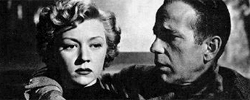
In A Lonely Place
1950 -
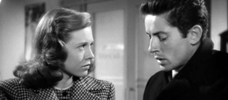
They Live By Night
1948 -
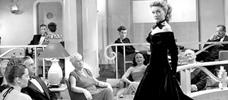
A Woman’s Secret
1949 -
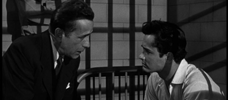
Knock on Any Door
1949 -

Born to Be Bad
1950 -
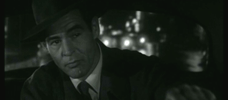
On Dangerous Ground
1952 -
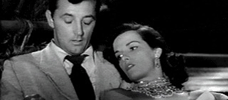
Macao
1952 -
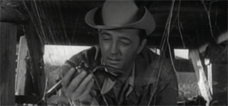
The Lusty Men
1952 -

Johnny Guitar
1954 -
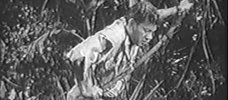
High Green Wall
1954 -
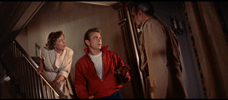
Rebel Without a Cause
1955 -
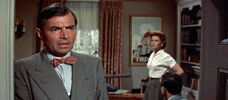
Bigger Than Life
1956 -

Hot Blood
1956 -

The True Story of Jesse James
1957 -
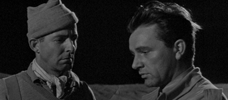
Bitter Victory
1957 -

Party Girl
1958 -

King of Kings
1961 -
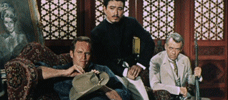
55 Days at Peking
1963 -

The Janitor
1974 -
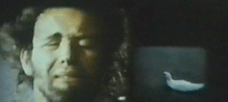
We Can’t Go Home Again
1973-1976 -

Lightning Over Water
1980
We don’t do comments anymore, but you may contact us here or find us on Twitter or Facebook.



